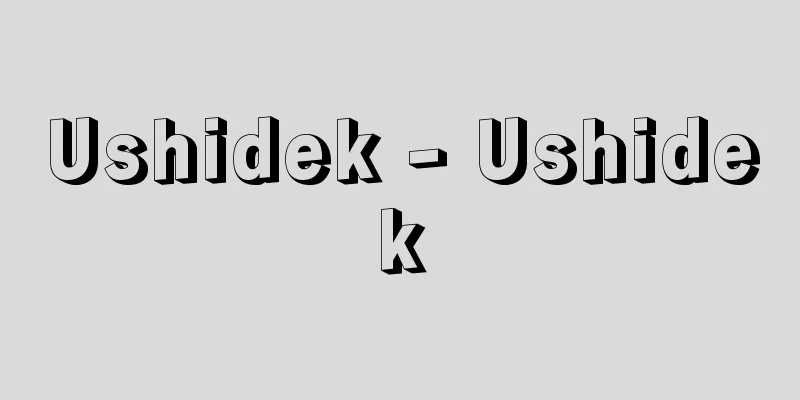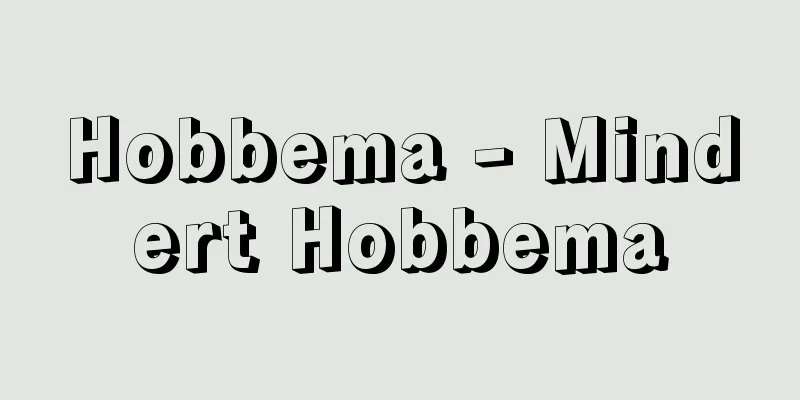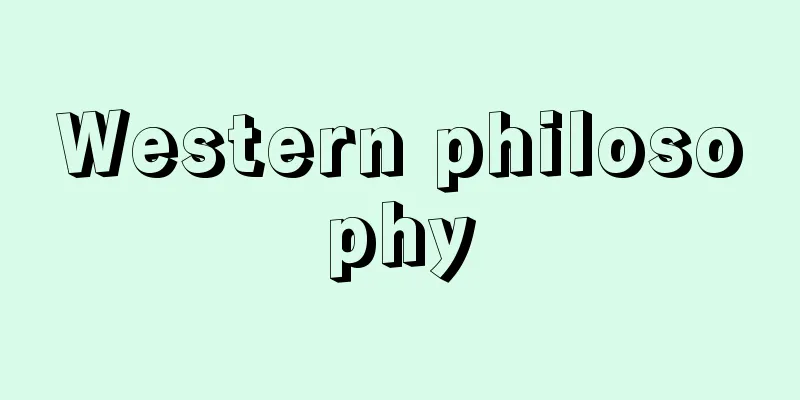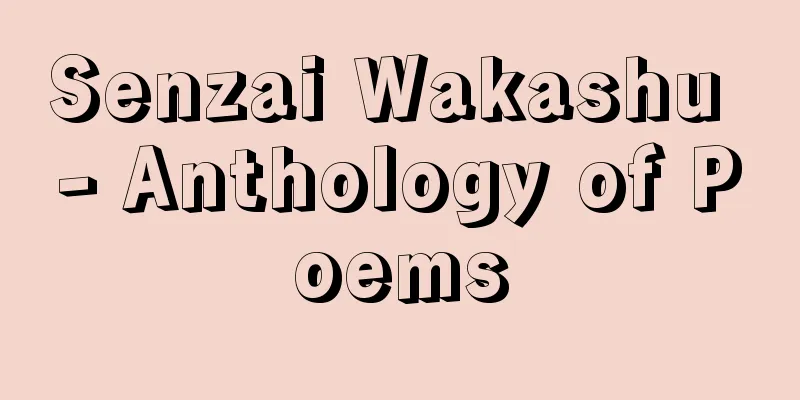Katsuragawa Hoshu

|
A medical family in the Edo period. The 4th and 7th generations of the Katsuragawa family were known as Hoshu. [Tetsuo Suenaka] 4th generation(1751-1809) Born in Edo. His given name was Kuniakira, and his pen names were Kokan and Gekkei. Along with his younger brother Hosan (Morishima Nakara, Manzotei), he was a man of great intelligence, and was involved in many notable historical achievements. In 1769 (Meiwa 6), he was the youngest person to participate from start to finish in the translation of Kaitai Shinsho, which marked the beginning of Dutch studies. He was also ordered by the shogunate to frequently speak with the heads of the Dutch trading posts, and in 1776 (An'ei 5) he visited and spoke with Thunberg together with Nakagawa Jun'an, and his genius was introduced in Thunberg's book Nihon Kiko (Travels in Japan). In 1777, he became a court physician, and in 1783 (Tenmei 3), he became a Hogen. In 1793 (Kansei 5), when Daikokuya Kodayu (Kodayu) was repatriated from Russia to Matsumae, he compiled the oral dictations of Kodayu and others into the 12 volumes of Hokusabunryaku (A Summary of the History of Hokusa), translated and edited one volume of Roshiashi (A Journal of Russia), and compiled Roshia Ryakuki (A Summary of Russia). In 1794, he became a professor in the Shogunate Medical School, in charge of surgery, and was the first to apply the microscope to medicine. His works covered a wide range of subjects, including Oranda Yakusen (Selection of Medicines from Holland), Kaijo Biyouho (Preliminary Guide to the Sea), Bankoku Zusetsu (Illustrated Guide to the World), Chikyu Zenzu (Complete Map of the Earth), and Hyōmin Goranki (A Record of the Voyage of the Wanderer). He died on June 21, 1812. His grave is at Jogyo-ji Temple in Isehara City, Kanagawa Prefecture. [Tetsuo Suenaka] 7th generation(1826-1881) Born in Edo. His given name was Kunioki, his childhood name was Hoan, and his pen names were Teikyo and Gekkei. In 1843 (Tenpo 14), he suffered from a chest contusion and received Western medical treatment from Totsuka Seikai and Ito Genboku. In 1844, he inherited the family headship. In 1846 (Koka 3), he became the personal physician of Shogun Ieyoshi. In 1847, he became a professor at the Institute of Western Medicine and taught Dutch studies to Nakamura Masanao. In 1853 (Kaei 6), he became a hōgen. From 1855 to 1858 (Ansei 2 to 5), he published 10 volumes of "Oranda Jijii". In 1861 (Bunkyu 1), he interviewed Siebold, who visited Japan again. In 1863, he began studying English studies with Narushima Ryuhoku. In 1868 (Meiji 1), he declined his position as the inner physician, changed his name to Morishima Shingo, and opened a pharmacy in Asakusa. He died on September 2, 1881. His works include "Taihei Shunkotoba" and "Zuishin Kansu." He is buried at Jogyoji Temple in Isehara City, Kanagawa Prefecture. [Tetsuo Suenaka] "Genkichi Imaizumi, 'The House of Dutch Studies: The People of Katsura River, Final Chapter' (1969, Shinozaki Shorin)" [References] | | | | | | | | | | | |Written by Krums, translated by Sugita Genpaku, Maeno Ryotaku, Nakagawa Junan, and Katsuragawa Hoshu, illustrated by Odano Naotake, published in 1774 (An'ei 3), held at the National Diet Library . "Anatomy New Book" Source: Shogakukan Encyclopedia Nipponica About Encyclopedia Nipponica Information | Legend |
|
江戸時代の医家。桂川家では4代、7代が甫周を通称とする。 [末中哲夫] 4代(1751―1809)江戸の生まれ。名は国瑞(くにあきら)、字(あざな)は公鑑、月池と号した。弟甫粲(ほさん)(森島中良(なから)、万象(まんぞう)亭)とともに才知にあふれ、歴史上著名な事績に関与した。1769年(明和6)には蘭学(らんがく)創始の端緒となった『解体新書』の翻訳事業に最年少者として終始参加。また幕命を受けしばしばオランダ商館長らと対話し、1776年(安永5)にはツンベルクを中川淳庵(じゅんあん)とともに訪れて対話、その英才ぶりがツンベルクの著『日本紀行』に紹介されている。1777年奥医師、1783年(天明3)法眼(ほうげん)。1793年(寛政5)大黒屋光太夫(幸太夫)がロシアから松前に送還されたとき、光太夫らの口述をまとめ『北槎聞略(ほくさぶんりゃく)』12巻を著し、そのほかに『魯西亜誌(ろしあし)』1巻を訳編、また『魯西亜略記』を編纂(へんさん)した。1794年幕府医学館教授、外科担当となり、顕微鏡を医学に初めて応用した。著作は『和蘭(おらんだ)薬選』『海上備要法』『万国図説』『地球全図』『漂民御覧記』など多方面にわたる。文化(ぶんか)6年6月21日没。墓所は神奈川県伊勢原(いせはら)市の上行(じょうぎょう)寺。 [末中哲夫] 7代(1826―1881)江戸の生まれ。名は国興(くにおき)、幼名甫安、字は禎卿、月池と号した。1843年(天保14)胸部打撲疾患のおり、戸塚静海・伊東玄朴(げんぼく)の洋方治療を受けた。1844年家督を相続。1846年(弘化3)将軍家慶(いえよし)の侍医。1847年西洋医学所教授となり、中村正直(まさなお)に蘭学を教授。1853年(嘉永6)法眼。1855~1858年(安政2~5)『和蘭字彙(じい)』10冊を刊行。1861年(文久1)再来日のシーボルトに面接。1863年成島柳北(なるしまりゅうほく)と英学研究に着手。1868年(明治1)奥医師を辞退して森島新悟と改名し、浅草に薬局を開いた。明治14年9月2日没。著作に『太平春詞』『随身巻子(かんす)』などがある。墓所は神奈川県伊勢原市の上行寺。 [末中哲夫] 『今泉源吉著『蘭学の家 桂川の人々 最終篇』(1969・篠崎書林)』 [参照項目] | | | | | | | | | | | |クルムス著 杉田玄白・前野良沢・中川淳庵・桂川甫周訳 小田野直武画 1774年(安永3)刊国立国会図書館所蔵"> 『解体新書』 出典 小学館 日本大百科全書(ニッポニカ)日本大百科全書(ニッポニカ)について 情報 | 凡例 |
<<: Katsuragawa Renri fence - Katsuragawa Renri fence
Recommend
Porte de Clignancourt (English spelling)
…An open-air market selling antiques and used clo...
Black Lily Princess - Kuroyurihime
A woman who appears in the story "Kuroyurihim...
Tsukiji Foreign Settlement
The foreign settlement was located in Akashicho, T...
Larix decidua (English spelling) Larixdecidua
… [Toshio Hamatani]. … *Some of the terminology t...
Free goods - jiyuzai
〘 noun 〙 A good that satisfies human desires, but ...
Kishizawa Shikisa (3rd generation)
[Born] 1774 [Died] 1829 A shamisen player of Tokiw...
Wirth, Louis
Born: August 28, 1897 in Gemünden Died: May 3, 195...
El Polito
…His performance style was flashy and popular, bu...
Ounce - Onsu (English spelling) ounce
A unit of mass in the imperial system and a unit ...
Mayailurus iriomotensis (English spelling) Mayailurusiriomotensis
…The cheek teeth are not molar-shaped like those ...
Bardem, JA (English spelling)
… One of the pioneers of Spanish cinema is the ca...
Anima
〘Noun〙 (anima)① A Christian term. Soul. Spirit. ※D...
Fontanesi, Antonio
Born: February 23, 1818 in Reggio Emilia Died Apri...
Kim Manjung - Kinmanju (English spelling)
[Born] King Injo 15 (1637) [Died] Sukjong 18 (1692...
mastication reflex
…Furthermore, for mastication to be performed smo...


![Nanno [town] - Nanno](/upload/images/67cc6a576a84d.webp)






